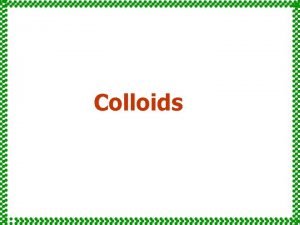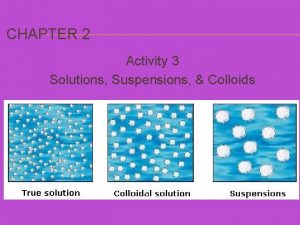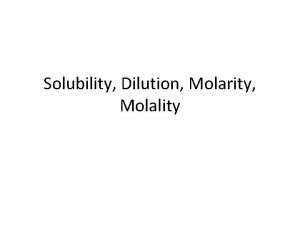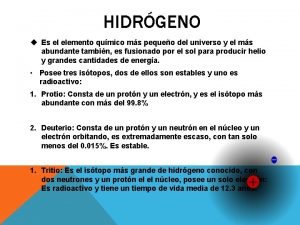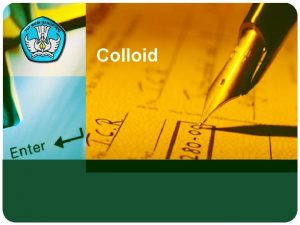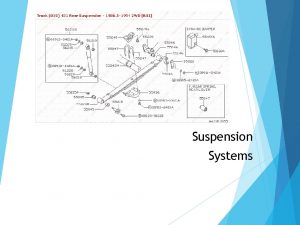What is metal colloid Metal Colloid Colloid Suspension










- Slides: 10

What is metal colloid? ?

Metal Colloid • Colloid – Suspension of a phase (liquid or solid) in another phase – Colloidal particles should be large enough (> 1 nm) and of relatively weak size in order not to settle out (< 1 μm) • Metal Colloid – Suspension of metal nanoparticles in aqueous solution – Obtained by synthesizing metal nanoparticles dispersed in liquid phase and stabilization of the product

Metal Nanoparticles • Metals in nanometer scale (1 – 100 nm) • Exhibit some different properties with bulk metals, such as melting points and optical properties • Can be applied in catalysis, photochemistry, nanoelectronics, or optics

Metal Nanoparticles • Preparation – Mechanic subdivision of metallic aggregates (physical method) – Nucleation and growth of metallic atoms (chemical method)

Metal Nanoparticles • Phyiscal methods produce particles that: – Larger particle sizes – Board particle size distribution – Not reproducible • Chemical methods produce particles that: – Specific size – Well defined surface composition – Reproducible synthesis and properties

Synthesis of Metal Nanoparticles 1. Chemical Reduction of Metal Salts – Reacting metal salts with sodium borohydride 2. Thermal, photochemical, or sonochemical decomposition – Radiolysis of metal salts 3. Ligand reduction and displacement from organometallics – Reduction of some zerovalence organometallic complexes

Synthesis of Metal Nanoparticles 4. Metal vapor synthesis – Co-condensation of metal vapour with organic vapour in non-aqueous media 5. Electrochemical reduction – Electrolysis with the presence of quaternary ammonium salt

Stabilization of Metal Nanoparticles 1. Electrostatic Stabilization – Ionic compounds such as halides, carboxylates, or polyoxoanions, dissolved in (generally aqueous) solution – Generate an electrical double-layer around the particles to prevent particle aggregation

Stabilization of Metal Nanoparticles 2. Steric Stabilization – Macromolecules such as polymers or oligomers – Adsorb macromolecules at the surfaces of the particles to prevent aggregation

Stabilization of Metal Nanoparticles 3. Electrosteric Stabilization – Combination of electrostatic and steric stabilization – Ionic surfactants containing a polar headgroup able to generate an electric double layer and a lypophilic side chain able to provide steric repulsion
 Suspension vs solution
Suspension vs solution Hydrophilic colloids
Hydrophilic colloids Solutions, suspensions and colloids activity
Solutions, suspensions and colloids activity Saturation
Saturation Vertical fixation suspension
Vertical fixation suspension Liquid elements at room temperature
Liquid elements at room temperature Examples of non metals
Examples of non metals Difference between metal oxides and non metal oxides
Difference between metal oxides and non metal oxides Ionic compounds have
Ionic compounds have Venn diagram gas liquid solid
Venn diagram gas liquid solid El sodio es metal o no metal
El sodio es metal o no metal

